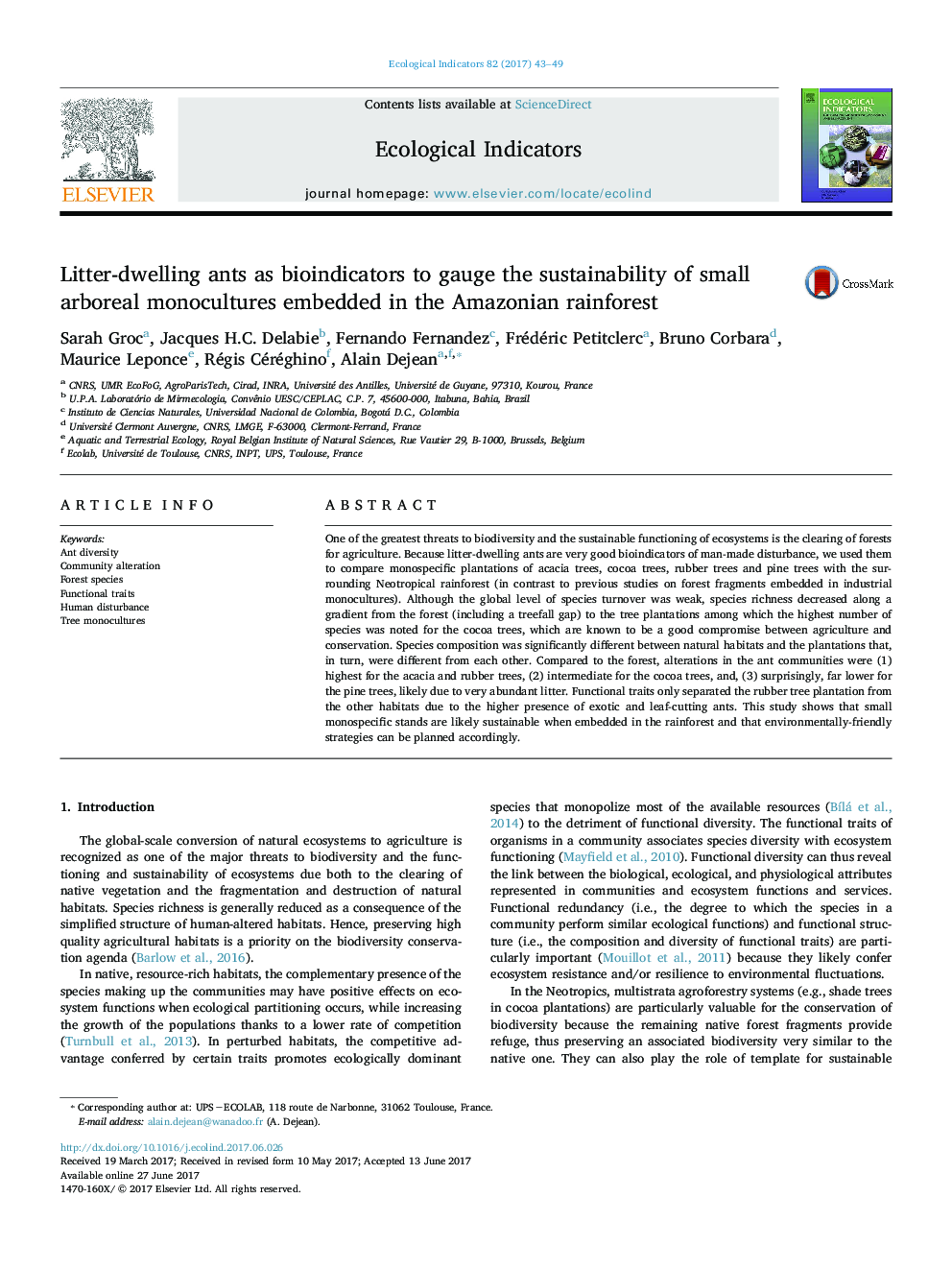| کد مقاله | کد نشریه | سال انتشار | مقاله انگلیسی | نسخه تمام متن |
|---|---|---|---|---|
| 5741307 | 1617120 | 2017 | 7 صفحه PDF | دانلود رایگان |
- Ants used as bioindicator to examine the impact of forest clearing.
- Impact on biodiversity of small tree monocultures embedded in the tropical forest.
- Ant diversity, functional traits and species composition are only slightly impacted.
- Ant diversity and species composition differ between types of tree monocultures.
- No habitat homogenization in small tree monocultures embedded in the rainforest.
One of the greatest threats to biodiversity and the sustainable functioning of ecosystems is the clearing of forests for agriculture. Because litter-dwelling ants are very good bioindicators of man-made disturbance, we used them to compare monospecific plantations of acacia trees, cocoa trees, rubber trees and pine trees with the surrounding Neotropical rainforest (in contrast to previous studies on forest fragments embedded in industrial monocultures). Although the global level of species turnover was weak, species richness decreased along a gradient from the forest (including a treefall gap) to the tree plantations among which the highest number of species was noted for the cocoa trees, which are known to be a good compromise between agriculture and conservation. Species composition was significantly different between natural habitats and the plantations that, in turn, were different from each other. Compared to the forest, alterations in the ant communities were (1) highest for the acacia and rubber trees, (2) intermediate for the cocoa trees, and, (3) surprisingly, far lower for the pine trees, likely due to very abundant litter. Functional traits only separated the rubber tree plantation from the other habitats due to the higher presence of exotic and leaf-cutting ants. This study shows that small monospecific stands are likely sustainable when embedded in the rainforest and that environmentally-friendly strategies can be planned accordingly.
Journal: Ecological Indicators - Volume 82, November 2017, Pages 43-49
